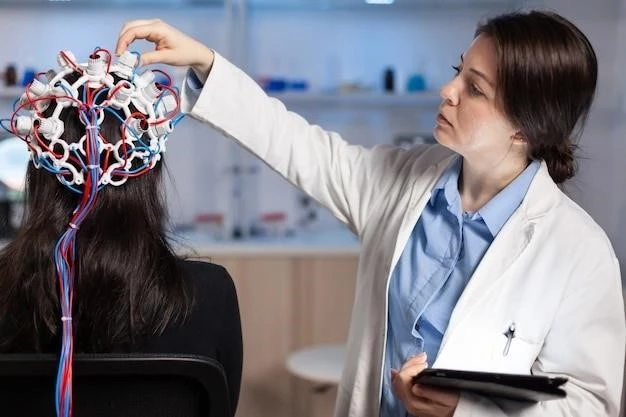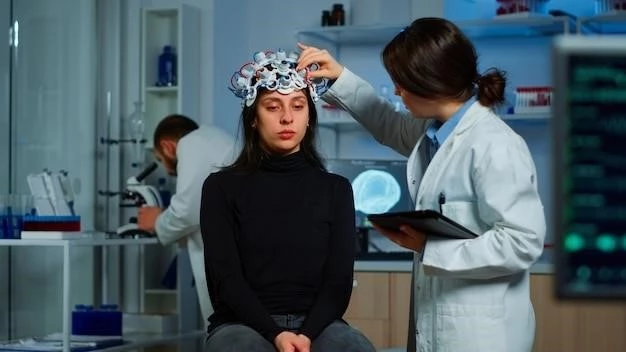Understanding Cerebrofacioarticular Syndrome ─ Comprehensive overview of the syndrome.
Description of Cerebrofacioarticular Syndrome
Cerebrofacioarticular Syndrome is a rare genetic disorder characterized by abnormalities in the brain, face, and joints. Individuals with this syndrome may experience developmental delays, facial anomalies, and joint contractures. The condition can vary in severity, impacting motor skills and overall quality of life. Diagnosis typically involves genetic testing and clinical evaluation by specialists.
Symptoms of Cerebrofacioarticular Syndrome
Manifestations include facial dysmorphism, joint contractures, developmental delays, and neurological issues.
Physical Symptoms
Physical symptoms of Cerebrofacioarticular Syndrome may include facial abnormalities like a prominent forehead, small chin, and low-set ears. Joint contractures such as stiff joints and limited range of motion are common. Additionally, individuals may exhibit muscle weakness, scoliosis, and short stature. These physical symptoms vary in severity and can impact daily activities and quality of life.
Neurological Symptoms
Neurological symptoms of Cerebrofacioarticular Syndrome may involve intellectual disability, speech delays, seizures, and abnormal brain development. Individuals with this syndrome might experience challenges with cognition, communication, and motor skills coordination. Neuroimaging studies can reveal structural abnormalities in the brain that contribute to the neurological symptoms observed in affected individuals.
Causes of Cerebrofacioarticular Syndrome
Genetic Mutations and environmental factors contribute to the development of this syndrome.
Genetic Mutations
Cerebrofacioarticular Syndrome is primarily caused by genetic mutations, with most cases being sporadic and not inherited. These mutations affect genes responsible for proper brain, facial, and joint development. Specific gene alterations lead to the characteristic features and varying severity of the syndrome. Genetic testing plays a crucial role in identifying these mutations and informing medical management strategies for affected individuals.
Environmental Factors
While genetic mutations are the primary cause of Cerebrofacioarticular Syndrome, certain environmental factors may influence the expression and severity of the condition. Factors such as exposure to toxins, infections during pregnancy, or maternal health status can potentially impact the development of the syndrome. Understanding and identifying these environmental triggers can help healthcare providers in providing comprehensive care and support to individuals with Cerebrofacioarticular Syndrome.
Diagnosis and Treatment of Cerebrofacioarticular Syndrome
Evidence-based approaches for accurate diagnosis and tailored treatment of this complex syndrome.
Diagnostic Procedures
Diagnosis of Cerebrofacioarticular Syndrome typically involves genetic testing to identify specific gene mutations associated with the condition. Additionally, imaging studies like MRI or CT scans may be used to assess brain abnormalities. Clinical evaluation by a multidisciplinary team of specialists, including geneticists, neurologists, and orthopedic surgeons, is crucial for a comprehensive diagnosis. Early and accurate diagnosis enables personalized treatment plans to address the diverse symptoms and challenges presented by the syndrome.
Treatment Options
Treatment for Cerebrofacioarticular Syndrome focuses on managing symptoms and improving quality of life. Multidisciplinary care involving specialists such as physical therapists, speech therapists, and developmental pediatricians is essential. Interventions may include physical therapy to address joint contractures, speech therapy for communication challenges, and educational support for developmental delays. Surgical procedures like corrective orthopedic surgeries may be considered based on individual needs. Early intervention and ongoing support play a critical role in optimizing outcomes for individuals affected by this syndrome.

Research Advances in Cerebrofacioarticular Syndrome
Exploring new insights and potential breakthroughs in understanding and managing this syndrome.
Current Studies and Findings
Ongoing research is investigating potential genetic modifiers and phenotypic variability in Cerebrofacioarticular Syndrome. Studies aim to elucidate the underlying mechanisms contributing to the diverse clinical presentations of the syndrome. Additionally, research is focused on developing targeted therapies to address specific symptoms and improve overall outcomes for affected individuals. Collaborative efforts between researchers and healthcare providers continue to enhance our understanding and management of this complex genetic disorder.
Potential Future Developments
Future advancements in Cerebrofacioarticular Syndrome research may lead to targeted therapies based on genetic insights, personalized treatments, and improved diagnostic tools. Gene editing technologies, such as CRISPR-Cas9, hold promise for correcting specific genetic mutations associated with the syndrome. Collaborative efforts among medical professionals, researchers, and advocacy groups are crucial in driving innovation and improving outcomes for individuals with Cerebrofacioarticular Syndrome in the years ahead.
Living with Cerebrofacioarticular Syndrome
Strategies promoting a positive quality of life and comprehensive care for individuals with the syndrome.
Quality of Life Considerations
Addressing physical, emotional, and social needs to enhance well-being in individuals with Cerebrofacioarticular Syndrome. Promoting independence, adaptive skills development, and access to supportive services are essential components in improving their overall quality of life. Tailored care plans considering individual strengths and challenges contribute to a holistic approach in maximizing the quality of life for those living with this syndrome.
Supportive Care Strategies
Implementing a multidisciplinary approach involving therapists, educators, and caregivers to provide comprehensive support for individuals with Cerebrofacioarticular Syndrome. Tailored interventions focusing on physical, cognitive, and emotional aspects help in addressing the unique needs of each individual. Supportive care strategies aim to enhance functional abilities, promote social interaction, and improve overall well-being. Building a strong support network and access to community resources play a vital role in ensuring a high quality of life for those affected by this syndrome.
Cerebrofacioarticular Syndrome in Children
Evaluating unique considerations, interventions, and care approaches for pediatric patients with this syndrome.
Early Detection and Intervention
Timely identification of symptoms, genetic testing, and interventions play a crucial role in managing Cerebrofacioarticular Syndrome in children. Early developmental assessments, neuroimaging studies, and genetic evaluations enable prompt diagnosis and initiation of appropriate therapies. Early intervention services, such as physical therapy, occupational therapy, and speech therapy, are vital in supporting optimal development and improving outcomes for children with this rare genetic disorder.
Pediatric Treatment Approaches
Comprehensive care strategies for children with Cerebrofacioarticular Syndrome involve a team-based approach, including pediatric specialists, therapists, and educators. Individualized treatment plans encompass a range of interventions tailored to address developmental, cognitive, and physical challenges. Therapeutic modalities, educational support, and adaptive equipment are utilized to optimize functional abilities and enhance quality of life for pediatric patients. Early and ongoing multidisciplinary interventions are essential in promoting the overall well-being of children with this complex syndrome.
Support and Resources for Cerebrofacioarticular Syndrome
Connecting individuals and families with valuable support networks and essential resources for managing the syndrome.
Support Groups
Support groups provide invaluable emotional support, information sharing, and solidarity for individuals and families affected by Cerebrofacioarticular Syndrome. These groups offer a platform for sharing experiences, accessing resources, and fostering a sense of community. By connecting with others facing similar challenges, individuals can find comfort, guidance, and encouragement while navigating the complexities of the syndrome. Support groups play a vital role in promoting emotional well-being and building resilience in those impacted by this rare genetic disorder.
Therapeutic Services
Therapeutic services, including physical therapy, occupational therapy, and speech therapy, play a crucial role in addressing the diverse needs of individuals with Cerebrofacioarticular Syndrome. These services aim to enhance motor skills, communication abilities, and overall quality of life. Therapists develop customized treatment plans tailored to the unique challenges of each individual, focusing on maximizing independence and functional capabilities. Collaborative efforts between healthcare professionals and therapists create a holistic approach to care, facilitating optimal outcomes for individuals living with this syndrome.
